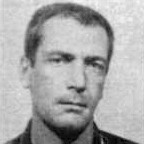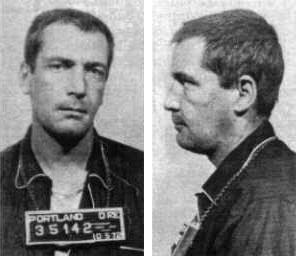
1940 - 1977
Gary Mark Gilmore
Summary
Name:
Gary Mark GilmoreYears Active:
1976Birth:
December 04, 1940Status:
ExecutedClass:
MurdererVictims:
1Method:
ShootingDeath:
January 17, 1977Nationality:
USA
1940 - 1977
Gary Mark Gilmore
Summary: Murderer
Name:
Gary Mark GilmoreStatus:
ExecutedVictims:
1Method:
ShootingNationality:
USABirth:
December 04, 1940Death:
January 17, 1977Years Active:
1976Date Convicted:
October 7, 1976bio
Gary Mark Gilmore was born as Faye Robert Coffman in McCamey, Texas, into a family riddled with dysfunction, secrecy, and a cycle of violence. His father, Frank Gilmore Sr., a con man and alcoholic, roamed the western U.S. selling fake magazine subscriptions. His mother, Bessie, came from Utah and had a complex relationship with the Mormon faith and her family. The Gilmore family constantly moved, and young Gary endured relentless physical and emotional abuse, particularly from his father.
Though Gary showed promise early on—scoring 133 on an IQ test and demonstrating artistic talent—he dropped out of school by ninth grade and began a life of petty crime. His first arrest was at 14, and he cycled in and out of reform schools and prisons for car theft, robbery, and assault. Diagnosed with antisocial personality disorder, Gary spent most of his adult life behind bars, spiraling further into violence and instability.
After serving time in Oregon and Illinois, Gilmore was paroled in April 1976 and moved to Provo, Utah, to live with a cousin. For a brief moment, he tried to find stability—working at a shoe repair shop, then an insulation company, and starting a turbulent romance with 19-year-old Nicole Baker. But Gilmore quickly reverted to old patterns: drinking, stealing, and lashing out.
murder story
In July 1976, Gilmore committed two cold-blooded murders just one day apart. On July 19, he robbed a gas station in Orem, Utah. The clerk, Max Jensen, complied fully with Gilmore’s demands—but Gilmore made him lie on the floor and shot him in the head anyway. The next night, he robbed a motel in Provo and murdered Bennie Bushnell, another young man who also followed every instruction.
Both victims were Brigham Young University students, husbands, and fathers. Gilmore showed no mercy.
After shooting Bushnell, Gilmore accidentally shot himself while trying to dispose of the murder weapon. His bloody trail led investigators to a mechanic’s garage where he had dropped off his truck. The mechanic recognized the bloodied Gilmore and matched his truck to reports on the police scanner. When Gilmore called his cousin for help with his injury, she turned him in.
He was arrested without resistance on July 20, 1976.

His trial lasted only two days. Despite the overwhelming evidence, Gilmore insisted on accepting responsibility and demanded the death penalty. The jury agreed. On October 7, 1976, he was found guilty of first-degree murder and sentenced to death.
Gilmore refused to appeal and repeatedly stated his desire to be executed. His stance sparked a national debate over capital punishment. The ACLU and even his own mother fought to stop the execution, but Gilmore was adamant: “This is my life and this is my death.”
On January 17, 1977, Gary Gilmore was executed by firing squad at Utah State Prison—the first person to be executed in the United States since the Supreme Court reinstated the death penalty in 1976. Hooded and strapped to a chair, he gave his infamous final words: “Let’s do it.” Five bullets ripped through his chest. He was pronounced dead at 8:07 a.m.
After death, his corneas were donated for transplants. His ashes were scattered from a plane over Utah.
His life became the subject of books, films, and even punk rock songs. Norman Mailer’s Pulitzer Prize-winning book The Executioner's Song immortalized Gilmore’s grim story, while his brother Mikal wrote a haunting memoir Shot in the Heart—showing the wreckage left behind not just in the victims' families, but in his own.